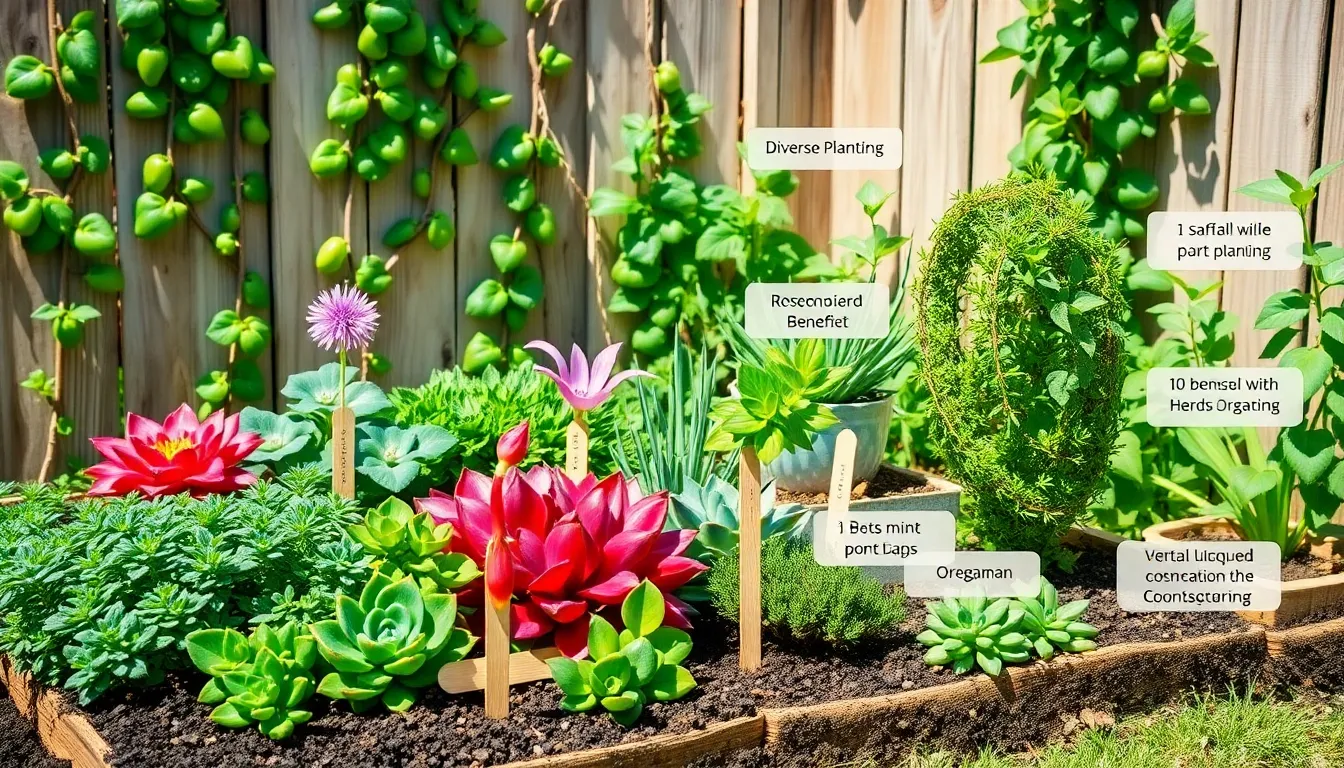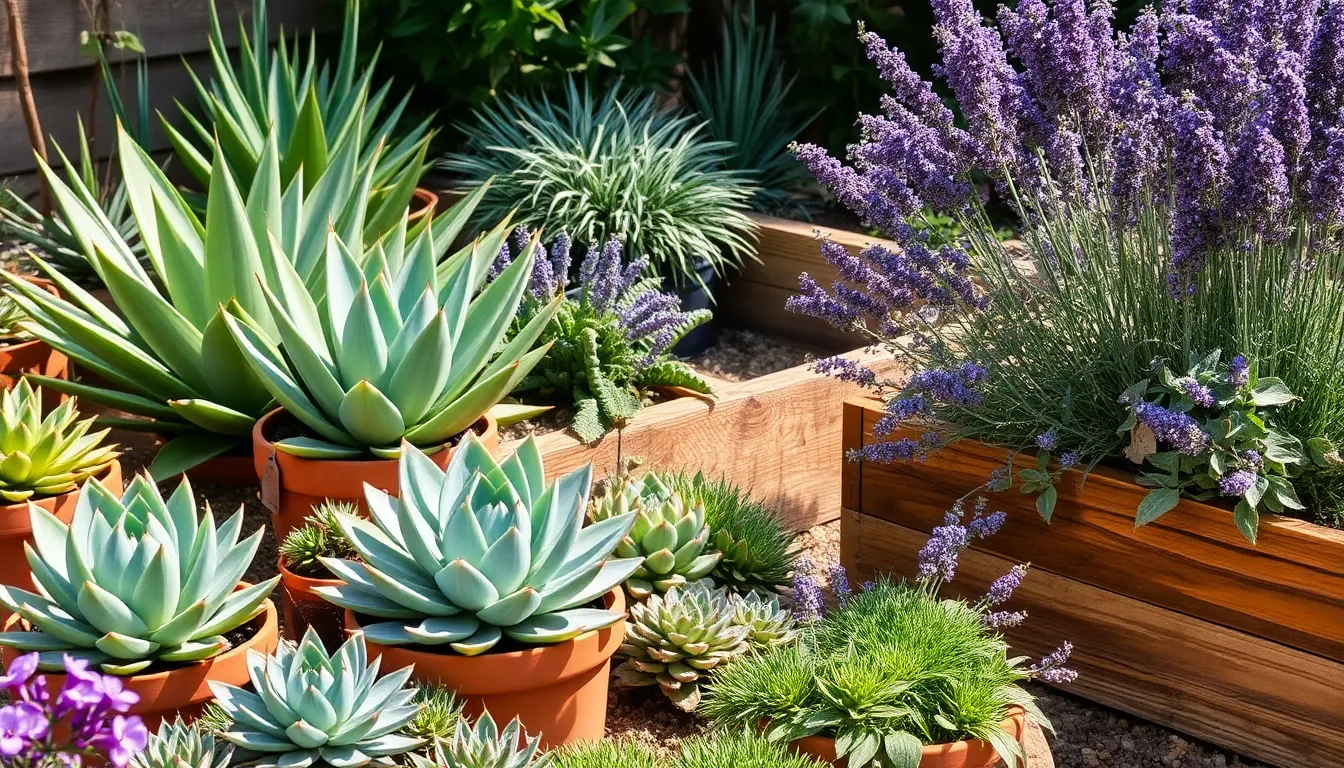In today’s world, where sustainability is more crucial than ever, conserving water in our gardens is a meaningful step we can all take, whether you’re planting your first sapling or managing a lush, thriving landscape. Organic water-saving techniques not only benefit our planet but also enhance the health and resilience of our plants, creating gardens that flourish even in the driest conditions.
For those new to gardening, mastering these techniques can transform how you view and nurture your outdoor space. Experienced gardeners will find fresh, innovative ideas to refine their methods and further embrace eco-friendly practices. In this article, we’ll delve into 14 effective strategies that are both simple to implement and deeply rewarding in their impact.
You’ll discover how to harness natural resources, like rainwater and mulch, to significantly reduce your water usage without sacrificing plant vitality. Learn to work with nature by selecting drought-tolerant varieties and employing clever irrigation methods that optimize every drop. With these organic techniques, your garden will become a sustainable oasis, brimming with life and possibility.
Install Drip Irrigation Systems
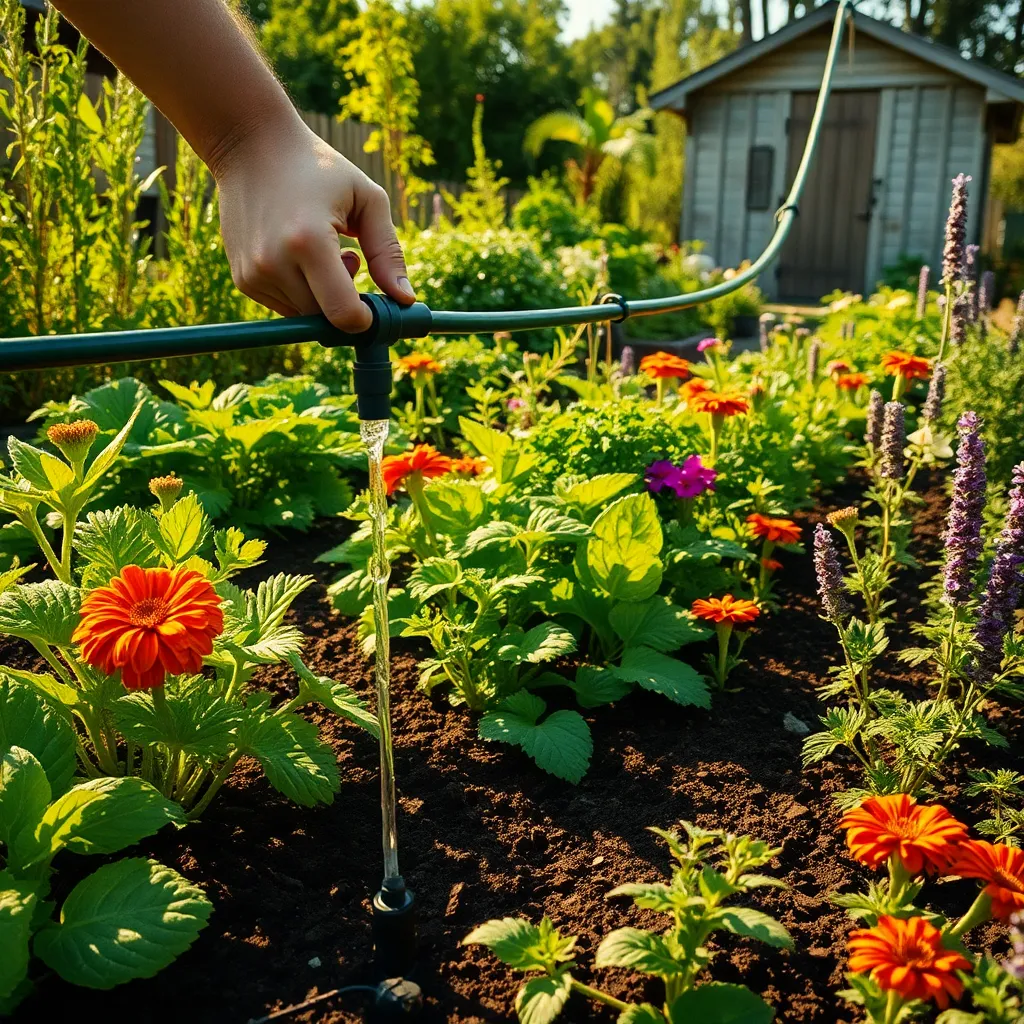
Drip irrigation is a highly efficient way to water your garden, ensuring that plants get the moisture they need directly at their roots. This system is particularly beneficial for those looking to conserve water and minimize waste in their gardens.
To set up a drip irrigation system, start with a kit that matches the size of your garden and the needs of your plants. Most kits come with tubing, emitters, and connectors, making installation straightforward even for beginners.
Position the emitters at the base of each plant to ensure water is delivered directly to the root zone. For plants with different water requirements, consider adjustable emitters that allow you to control the flow rate to each plant.
Advanced gardeners might integrate a timer with their system to automate watering schedules. This addition ensures that plants are consistently watered at optimal times, such as early morning or late afternoon, reducing evaporation and maximizing water use efficiency.
Collect Rainwater in Barrels
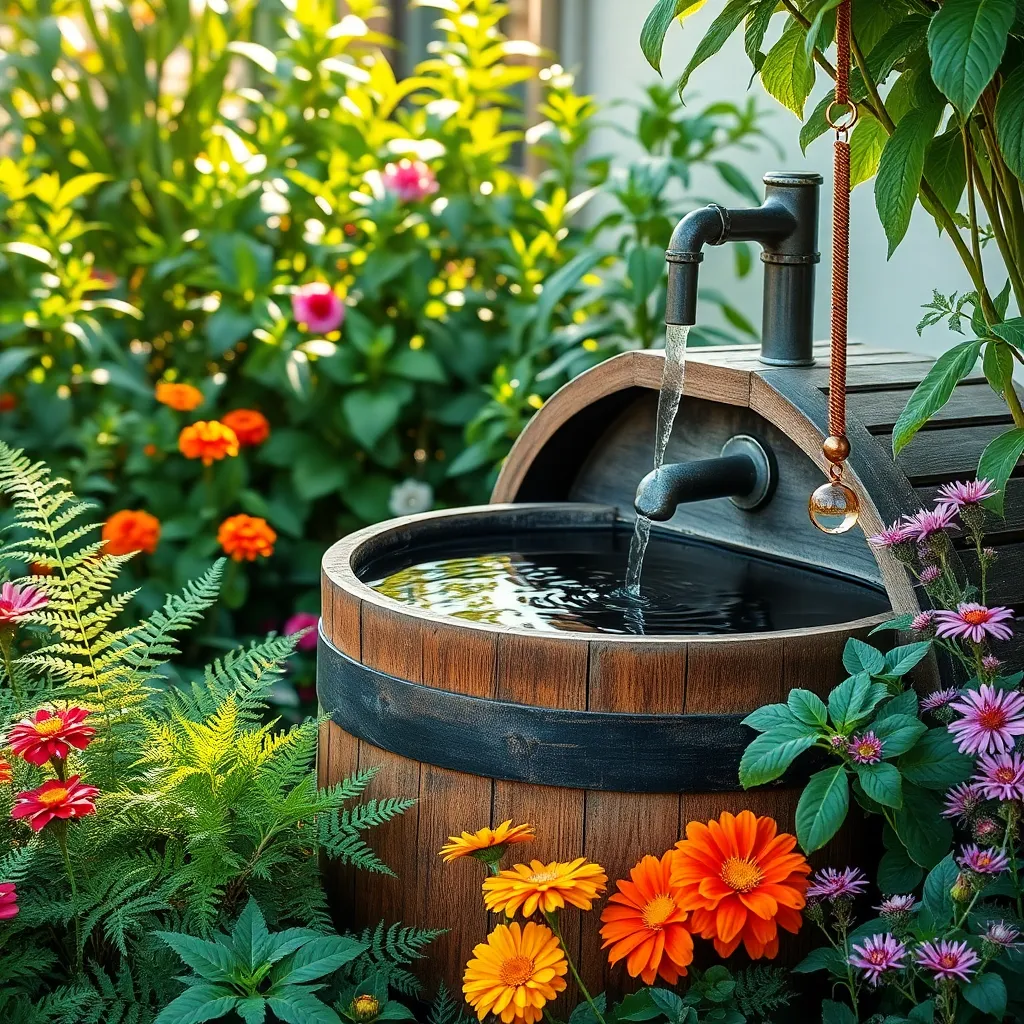
Rainwater collection is a sustainable practice that can significantly reduce your garden’s water usage. By installing rain barrels, you can capture and store rainwater, providing a free and natural source of irrigation for your plants.
Position your rain barrels under downspouts to maximize water collection from your roof. Ensure that the barrels have tight-fitting lids to prevent debris and mosquitoes from contaminating the water.
Using collected rainwater helps maintain the natural pH balance of the soil, as it is free from the chemicals often found in tap water. This is particularly beneficial for sensitive plants like blueberries and azaleas, which thrive in more acidic conditions.
For those with larger gardens, consider connecting multiple rain barrels with a linking kit to increase your storage capacity. Regularly check the barrels for leaks and clean them annually to ensure they remain in good working order.
Mulch Heavily Around Plants
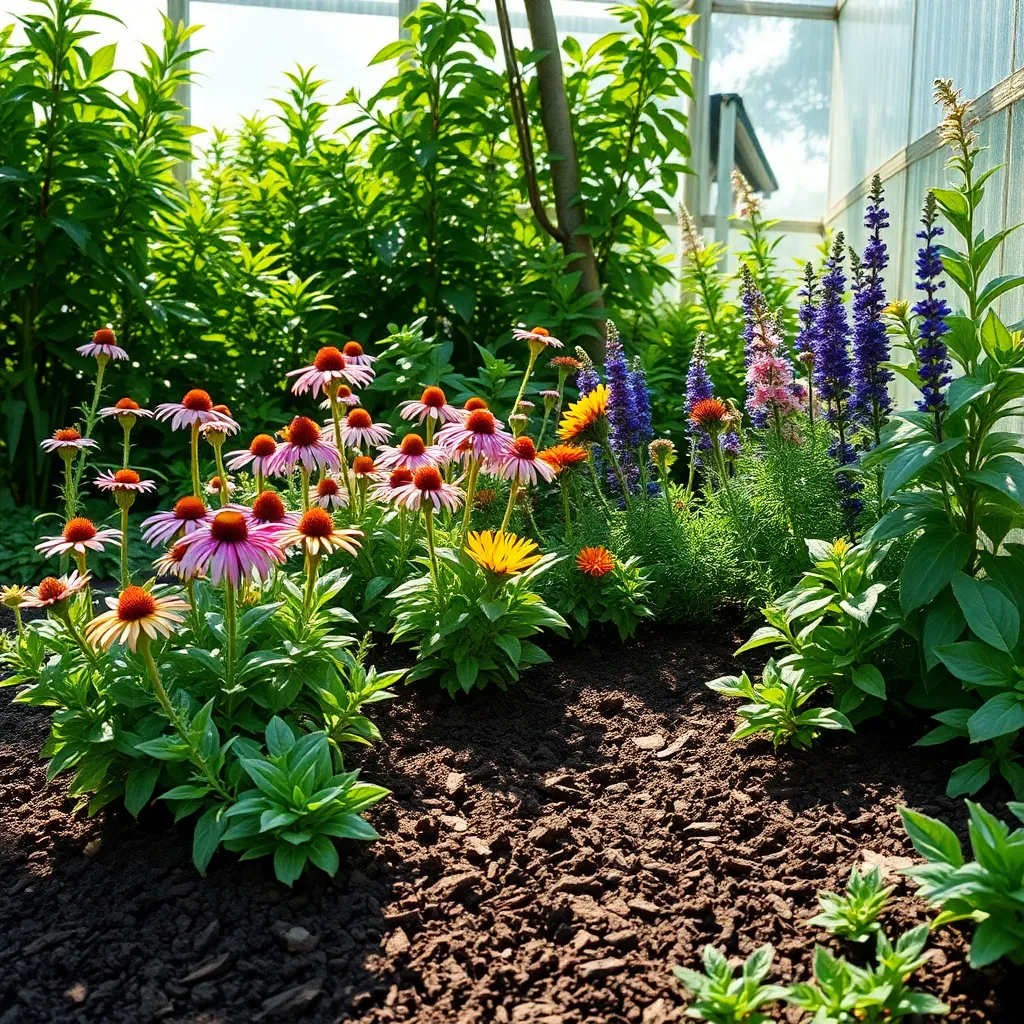
To conserve moisture and improve soil health, mulch heavily around your plants. By adding a thick layer of organic mulch like straw, wood chips, or shredded leaves, you can significantly reduce evaporation from the soil surface.
Begin by spreading mulch at least 2 to 4 inches deep around your plants, making sure to keep it a few inches away from the plant stems to prevent rot. This practice not only retains water but also helps suppress weeds, saving you time and effort in garden maintenance.
For those with more advanced gardening ambitions, consider using a combination of different mulches to maximize benefits. For example, applying a layer of compost beneath your mulch can slowly release nutrients as it breaks down, providing a natural and sustainable nutrient source for your plants.
In addition, mulching helps maintain a more consistent soil temperature, protecting plant roots from extreme heat and cold. Remember to replenish your mulch layer each season to maintain its effectiveness, as organic materials will naturally break down over time.
Choose Drought-Tolerant Varieties
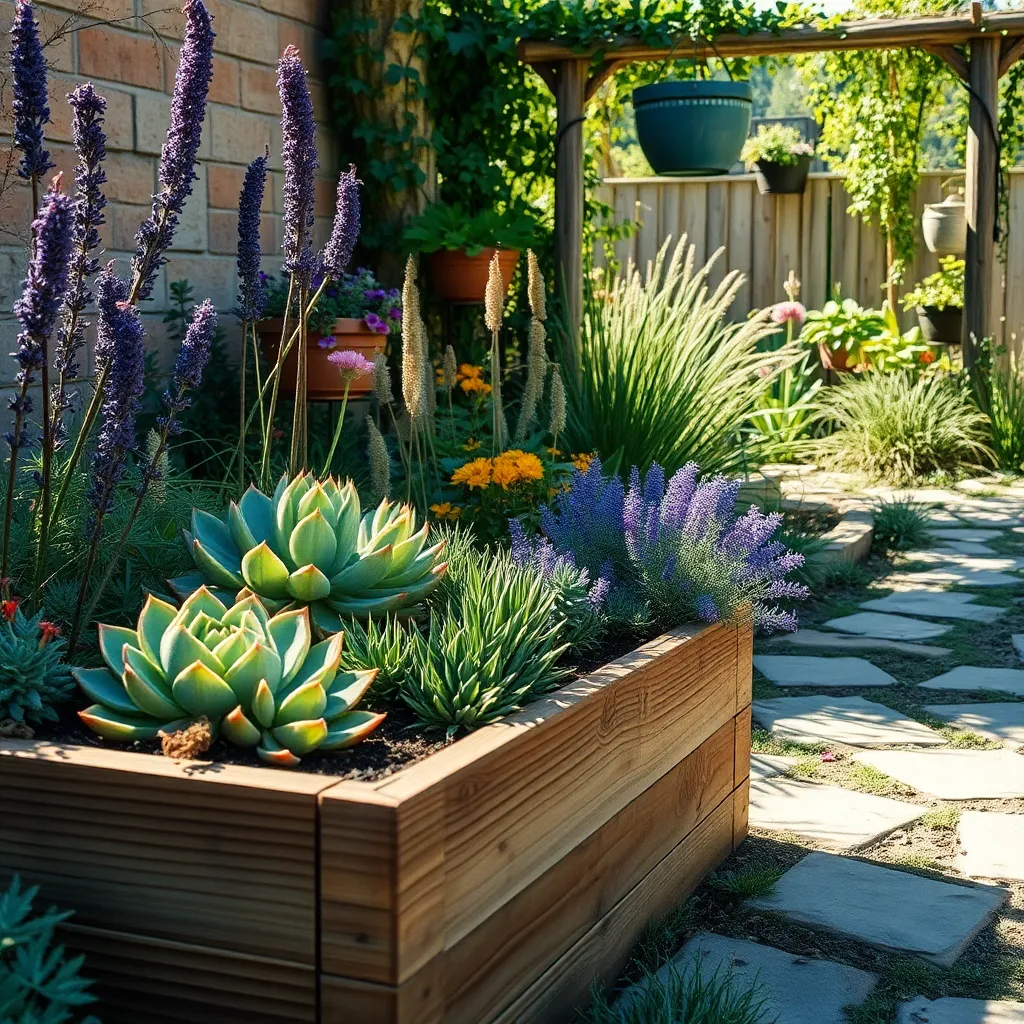
Incorporating drought-tolerant varieties into your garden can significantly reduce water usage. Choose plants like lavender, succulents, or yarrow, which thrive in dry conditions and require minimal watering once established.
To ensure success, start by selecting plants suited to your specific climate and soil type. Research native plants in your region, as they are naturally adapted to local conditions and often require less maintenance.
Plant these varieties in well-draining soil to prevent root rot, which is common in overly wet environments. You can improve drainage by incorporating organic matter, such as compost or sand, into your garden beds.
While these plants are drought-tolerant, they still need some care to establish. Water them deeply but infrequently, allowing the top inch of soil to dry out completely between waterings to encourage deep root growth.
Water Plants Early or Late
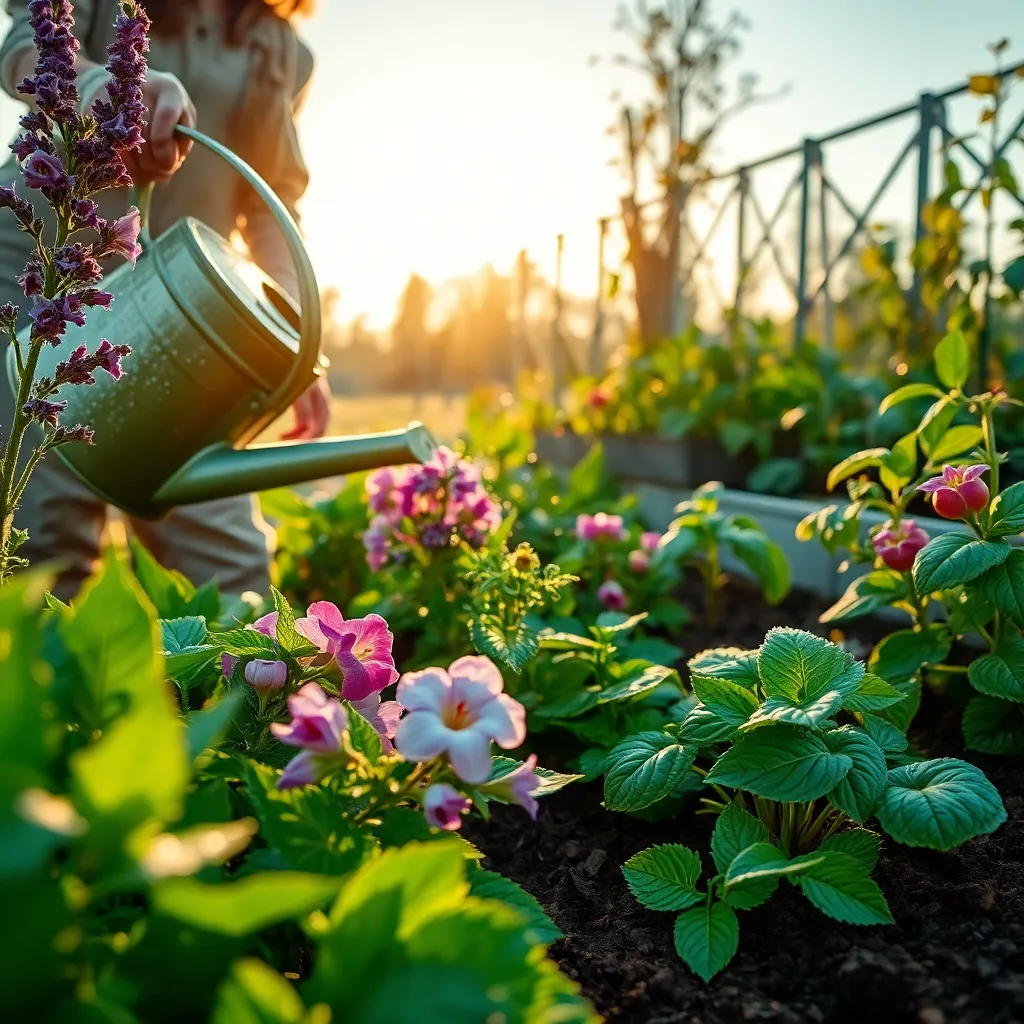
Watering your garden early in the morning or late in the evening is a proven strategy to conserve water and promote plant health. During these times, temperatures are cooler, which reduces evaporation and allows plants to absorb more water.
Early morning watering is particularly beneficial because it gives plants ample time to absorb moisture before the sun becomes too intense. This practice can also help prevent fungal diseases by allowing the foliage to dry out during the day.
On the other hand, watering late in the evening can be advantageous if you’re unable to water in the morning. Just ensure that the soil has good drainage to avoid root rot, as plants will sit with wet roots overnight.
For both times, it’s crucial to water deeply but infrequently to encourage roots to grow deeper into the soil. Use a soaker hose or drip irrigation system to deliver water directly to the base of the plants, minimizing waste and maximizing efficiency.
Utilize Greywater for Irrigation
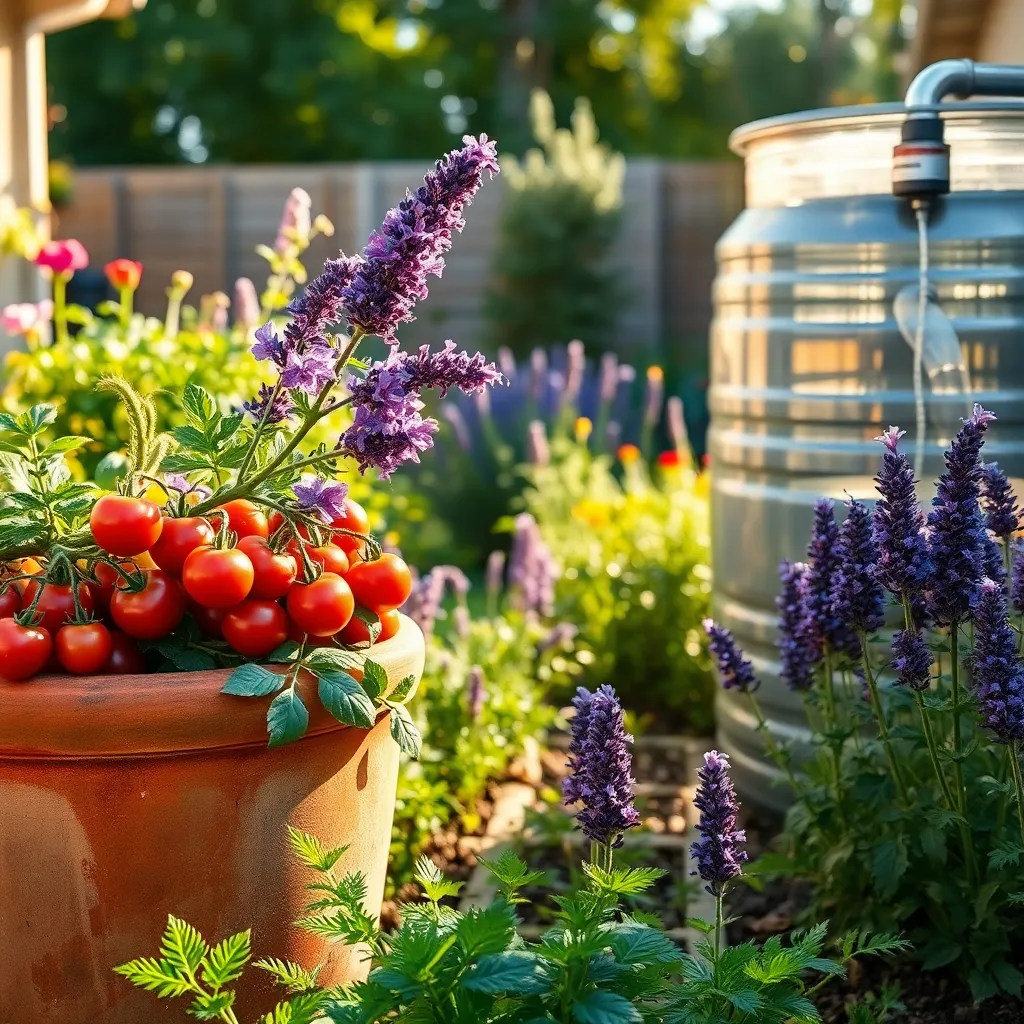
Reusing greywater for irrigation is an effective way to conserve water and support sustainable gardening practices. Begin by collecting water from household activities such as washing dishes, laundry, or even showering, ensuring that it is free from harmful chemicals and salts.
Consider using greywater to water non-edible plants, as this minimizes the risk of contamination. Deep-rooted shrubs and ornamental trees thrive particularly well with greywater, absorbing nutrients and moisture through their extensive root systems.
Implement a basic greywater system by redirecting water from your sink or washing machine to your garden using hoses or pipes. This setup is ideal for those with a bit of DIY aptitude, and it helps you manage water efficiently during dry spells.
Remember to rotate the areas in your garden where you apply greywater to prevent salt buildup in the soil. Advanced gardeners can enhance soil permeability by incorporating organic matter like compost, which helps plants absorb greywater more effectively.
Group Plants by Water Needs
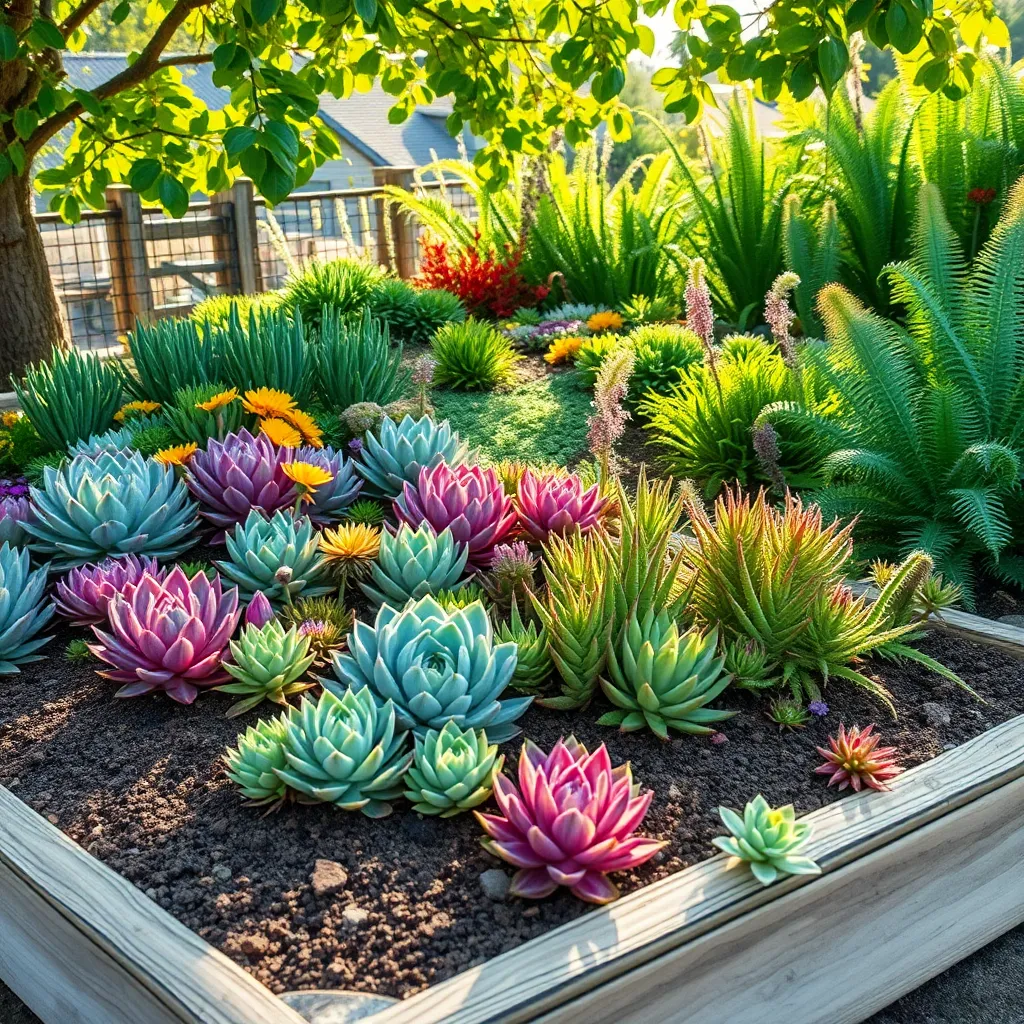
Grouping plants by their water needs is a smart strategy for conserving water in your garden. By doing so, you can tailor your watering schedule to suit the demands of different plant groups, ensuring that each receives the right amount of moisture without waste.
Start by researching the water requirements of each plant species in your garden. Common groupings include high-water plants like lettuce and cucumbers, moderate-water plants such as tomatoes and peppers, and low-water plants like lavender and succulents.
Position plants with similar water needs together to streamline your irrigation efforts. This not only saves water but also ensures that overwatering or underwatering doesn’t occur, which can lead to plant stress or disease.
For beginners, consider starting with a small area to test this method. Use mulch to retain moisture and reduce evaporation, further enhancing your water-saving efforts.
Advanced gardeners might experiment with hydrozoning, where irrigation systems are set up to deliver water to specific zones according to plant needs. This strategy can maximize efficiency and promote a thriving, sustainable garden.
Incorporate Organic Soil Amendments
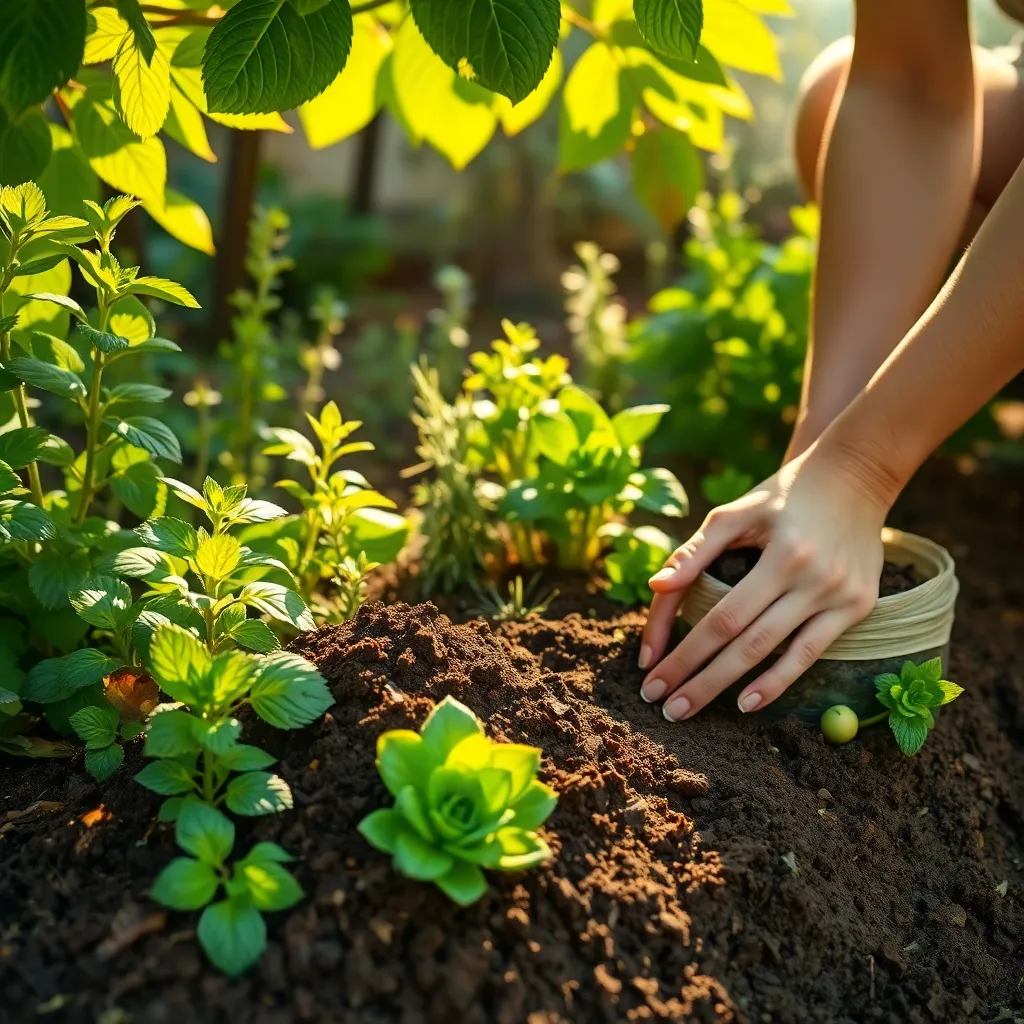
To enhance your garden’s water retention, incorporating organic soil amendments is a highly effective strategy. Amending your soil with organic matter not only improves its water-holding capacity but also enriches it with nutrients essential for plant growth.
Begin by adding well-rotted compost or aged manure to your garden beds, aiming for a layer about one to two inches thick. These materials improve soil structure, allowing it to retain moisture more efficiently, which is especially beneficial during dry spells.
For gardeners seeking more advanced techniques, consider using materials like coconut coir or biochar. Coconut coir is a sustainable option that holds water exceptionally well, while biochar can enhance nutrient retention and reduce the need for frequent watering.
Mix these amendments into the top six to eight inches of soil to ensure even distribution and effective results. This practice not only aids in water conservation but also promotes healthier root systems by providing a stable environment rich in organic material.
Reduce Lawn Area with Alternatives
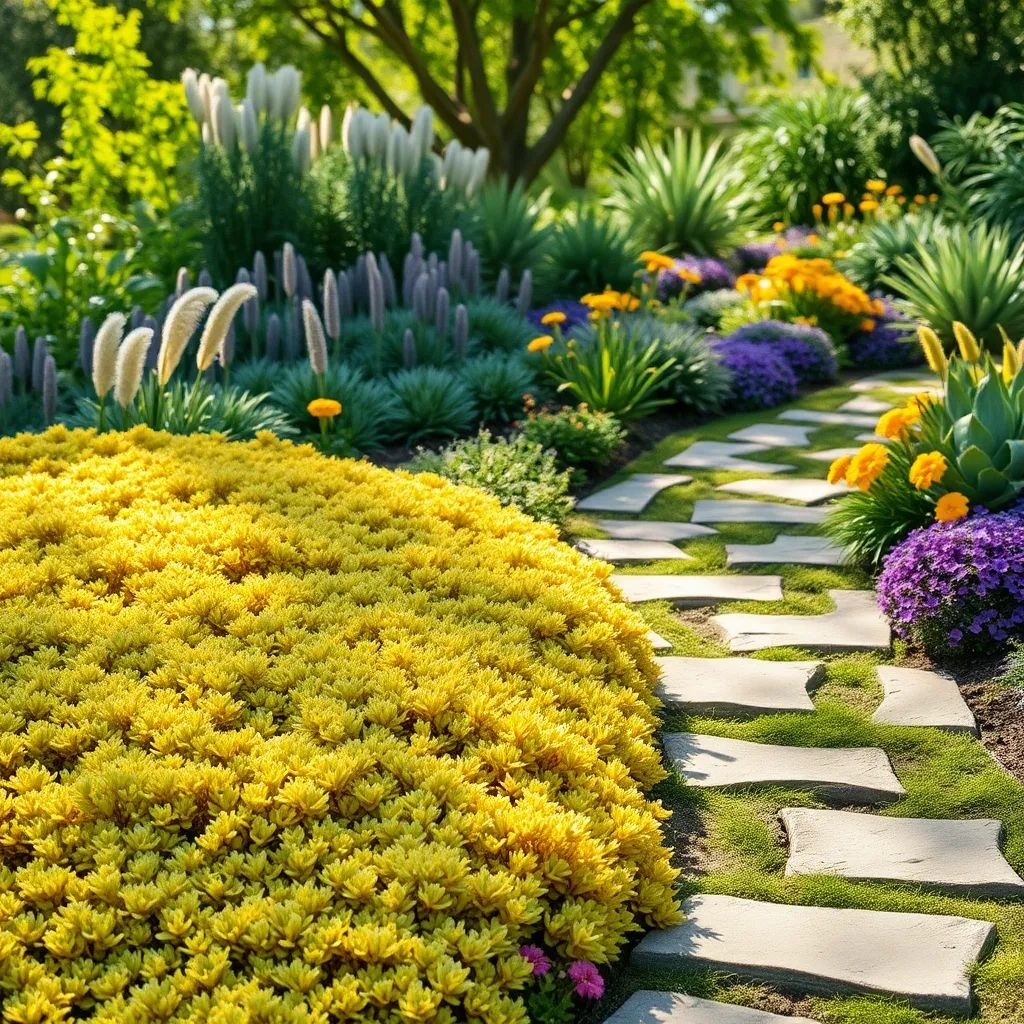
Reducing your lawn area is an effective way to save water and promote biodiversity in your garden. Instead of vast expanses of grass, consider planting native ground covers, which require less water and maintenance than traditional lawns.
Ground covers such as clover or creeping thyme are excellent alternatives. These plants are drought-tolerant and provide a lush, green appearance without the need for constant watering or mowing.
For a more varied landscape, you can incorporate ornamental grasses and wildflowers. These options not only conserve water but also attract beneficial insects and pollinators, enhancing your garden’s ecological health.
Beginner gardeners might start with low-maintenance plants like sedum or ajuga, which thrive in a range of soil types. Advanced gardeners can experiment with more diverse plantings, utilizing xeriscaping principles to create visually attractive, water-efficient gardens.
Shade Soil with Ground Covers
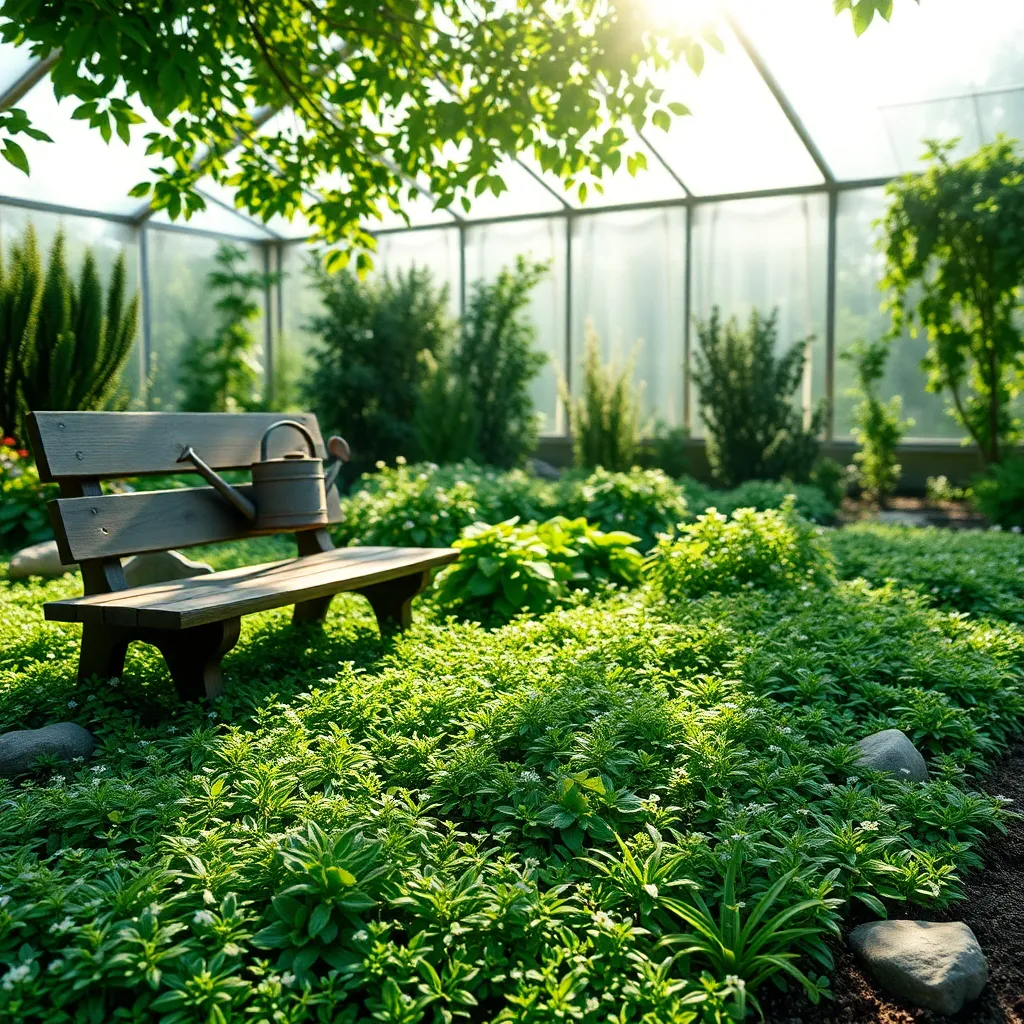
Ground covers are an excellent way to shade soil and conserve moisture in your garden. By planting dense, low-growing plants, you can reduce evaporation and suppress weeds naturally, which helps in water conservation.
Consider using plants like Ajuga, Pachysandra, and Vinca minor, which thrive in shady areas and require minimal maintenance. These ground covers are particularly effective in areas where grass struggles to grow, providing lush greenery with less watering.
To get started, prepare the soil by removing any existing weeds and adding a layer of organic compost to enrich it. Plant your chosen ground covers in the spring or fall, spacing them according to their growth habits to ensure full coverage over time.
For optimal growth, ensure the soil remains consistently moist but not waterlogged, especially during the establishment phase. Once established, these plants require little additional watering except during prolonged dry spells, making them an eco-friendly choice for water-saving gardens.
Aerate Soil to Improve Absorption
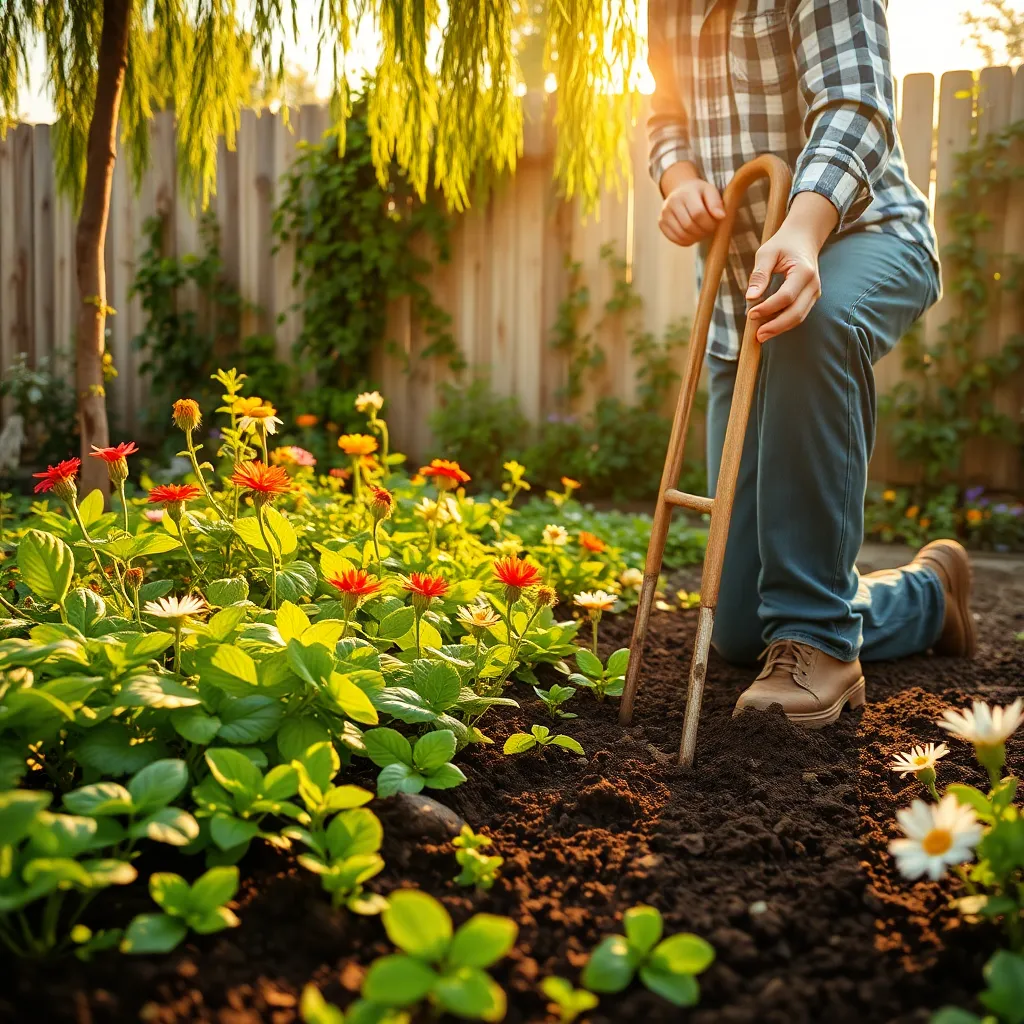
Aerating soil is a simple yet effective way to improve water absorption and promote healthier plant growth. By loosening compacted soil, you allow air, nutrients, and water to reach plant roots more efficiently, which is crucial for both beginners and seasoned gardeners.
To aerate your garden, consider using a garden fork or a manual aerator for smaller areas. Simply insert the fork into the soil and gently rock it back and forth to create small holes, ensuring that you cover the entire area for best results.
For larger gardens, renting or investing in a mechanical aerator can save time and effort. These machines are designed to remove small plugs of soil, which helps reduce compaction and enhances the soil’s ability to retain moisture.
It’s important to aerate your soil at the right time—typically during the growing season when the ground is moist but not overly wet. Doing so prevents damage to the soil structure and ensures that plants can make the most of the improved conditions.
Use Clay Pots for Moisture Retention
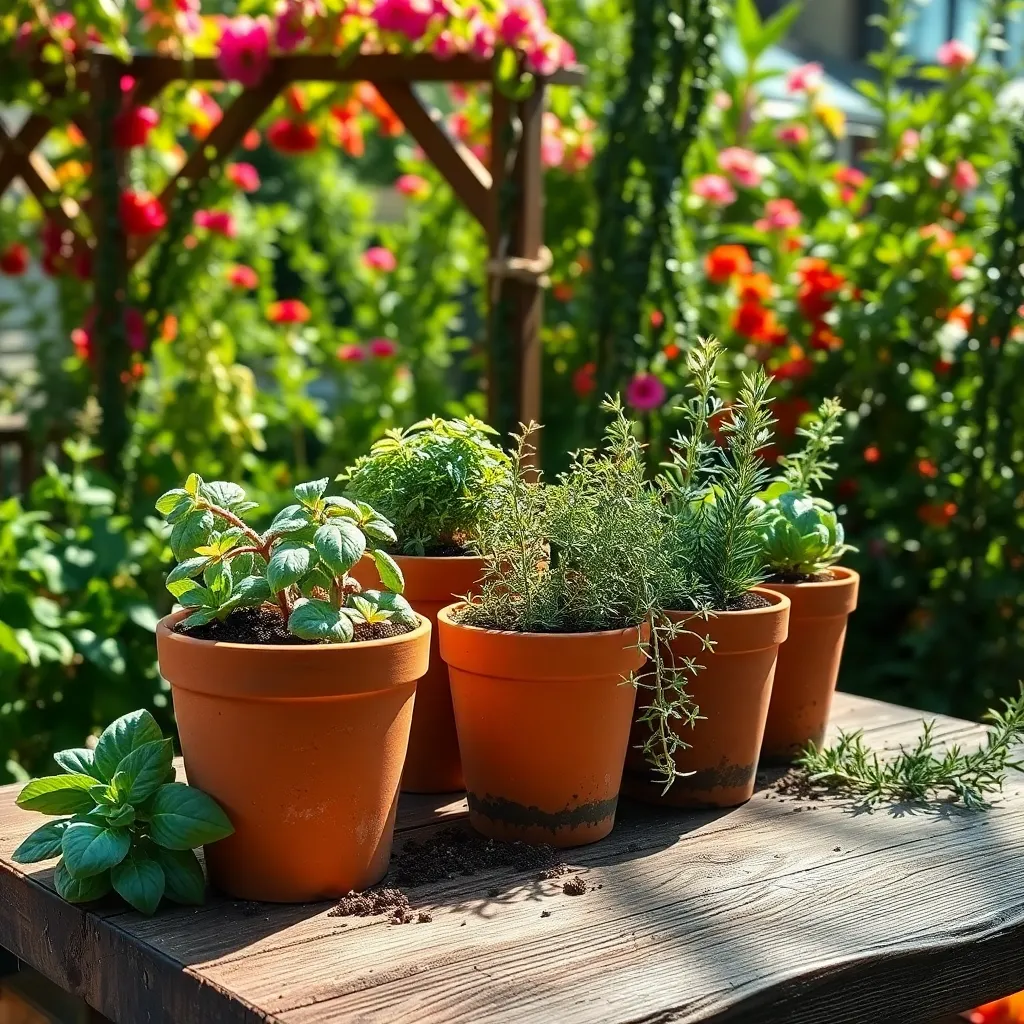
Clay pots are an excellent choice for gardeners looking to retain moisture in their soil. Unlike plastic pots, clay pots are porous, allowing water to wick through the walls and slowly release moisture to the roots. This makes them ideal for herbs and vegetables that prefer consistently moist soil, such as mint and lettuce. To maximize their effectiveness, consider placing a small saucer under each pot to catch excess water, which will be reabsorbed as the soil dries out.
For new gardeners, it’s essential to understand how clay pots can regulate temperature and moisture. Their thick walls provide natural insulation, keeping roots cooler in summer and warmer in winter. This helps reduce the frequency of watering, especially beneficial in hot climates where evaporation rates are high. Advanced gardeners can experiment with double-potting—placing a small clay pot inside a larger one with a layer of sand in between, which enhances insulation and moisture retention.
When choosing soil for clay pots, opt for a mix that retains moisture while allowing for proper drainage. A recommended blend includes one part organic compost, one part coconut coir or peat moss, and one part perlite or coarse sand. This combination ensures that the soil remains moist without becoming waterlogged, protecting plant roots from rot. Additionally, applying a layer of organic mulch on top can further reduce evaporation and maintain consistent soil temperature.
Clay pots are not only functional but also aesthetically pleasing, adding a rustic charm to any garden setting. Their natural look complements both indoor and outdoor spaces, making them versatile for various garden designs. Remember to periodically check for mineral deposits on the outside of the pots, which can indicate overwatering or hard water. Simply scrub these away with a mixture of vinegar and water to keep your pots looking fresh and functioning effectively.
Implement Companion Planting Strategies
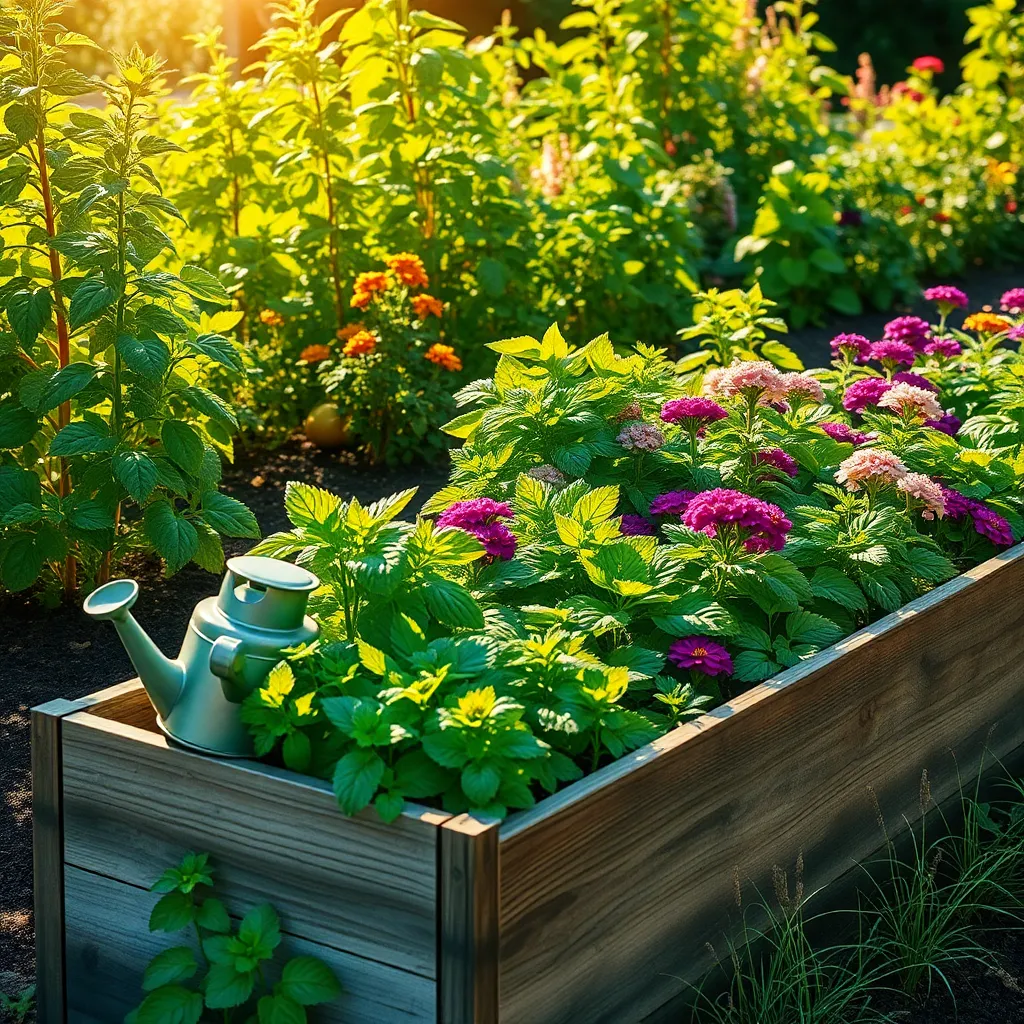
Companion planting is a highly effective strategy to conserve water while enhancing plant health and productivity. By strategically placing certain plants together, you can create a microenvironment that retains moisture and reduces evaporation.
For beginners, a great starting point is to pair thirsty plants with those that have lower water requirements, such as tomatoes with basil. Basil not only benefits from the shade provided by the taller tomato plants but also helps repel pests, reducing the need for additional interventions.
Advanced gardeners might consider interplanting leafy greens with deep-rooted plants like carrots. This combination allows the greens to shade the soil, minimizing moisture loss, while the carrots access deeper soil moisture, creating a harmonious balance.
To maximize the benefits of companion planting, ensure your soil is rich in organic matter and well-draining, as this supports the overall health of both plant types. Adding a layer of mulch around your plantings can further aid in moisture retention, reducing the need for frequent watering.
Create Windbreaks to Reduce Evaporation
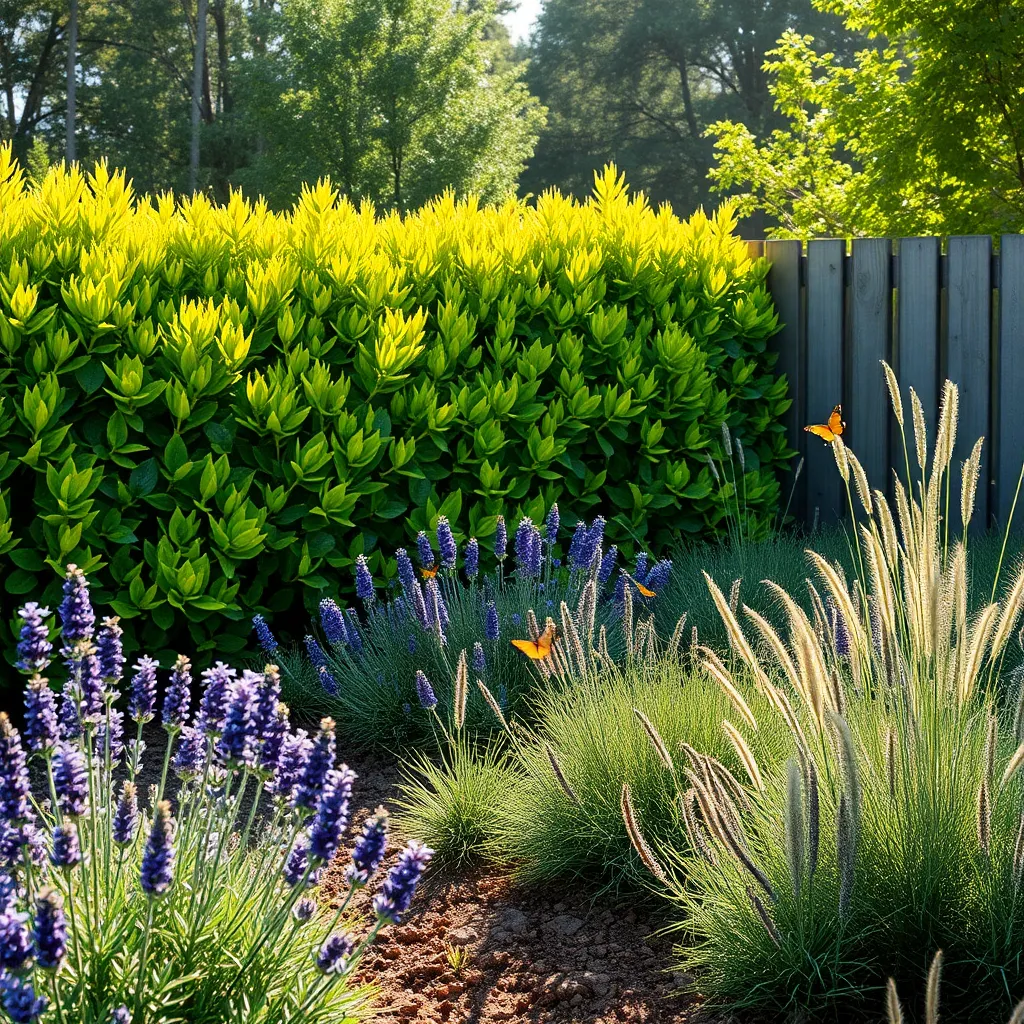
Creating windbreaks in your garden is an effective way to minimize water evaporation. By reducing wind speed, you can help your plants retain more moisture, which is crucial during hot, dry periods.
Begin by planting dense rows of shrubs or trees that can act as natural barriers. Evergreens are particularly effective as they maintain their foliage year-round, providing consistent protection.
Consider species like juniper or arborvitae for a robust windbreak. These plants not only block wind but also add aesthetic value to your garden with their lush greenery.
For a quicker solution, you can use temporary barriers made from burlap or other breathable materials. Install these structures strategically around your garden to shield delicate plants from harsh winds.
Ensure your windbreaks are positioned perpendicular to prevailing winds for maximum effect. This strategy will help reduce soil erosion and keep your garden healthier and more water-efficient.
Conclusion: Growing Success with These Plants
As we’ve explored in ’14 Organic Water-Saving Garden Techniques,’ nurturing relationships, much like tending a garden, requires intentional care and innovative strategies. We’ve delved into techniques such as active listening, expressing appreciation, setting boundaries, and fostering trust, alongside the importance of shared goals, adaptability, and effective conflict resolution. Just as a garden flourishes with mindful water conservation, relationships thrive through thoughtful, organic nurturing.
Now, take a moment to choose one concept that resonated with you most deeply and commit to implementing it in your relationship this week. Whether it’s initiating a heartfelt conversation or planning a shared activity, small steps can lead to significant growth.
Remember, strong relationships don’t just happen; they are cultivated through continuous effort and love. Bookmark this article to revisit these techniques whenever your relationship garden needs a little extra tending. As you invest in these practices, envision a future where your connections are as vibrant and resilient as a well-watered garden. With dedication and care, your relationships can bloom beautifully, standing the test of time. Save and nurture this guide—your relationship journey is just beginning.



